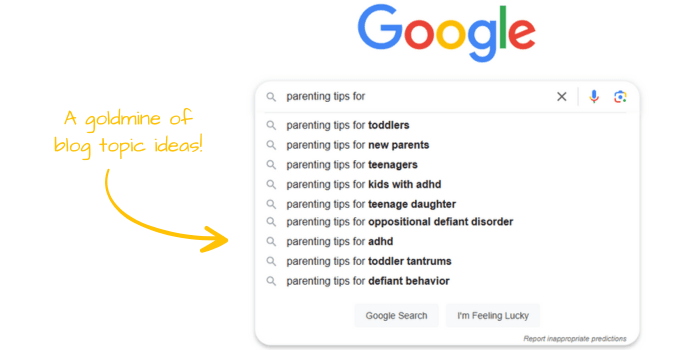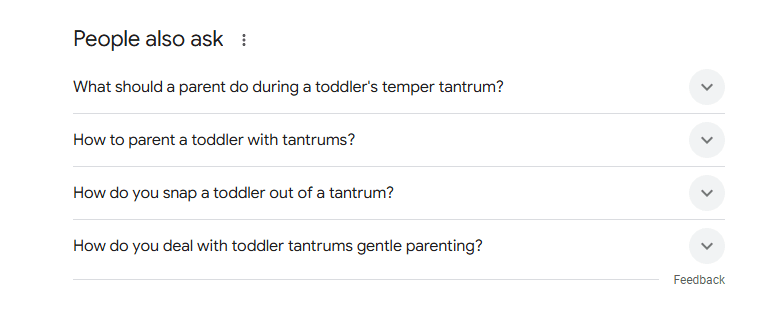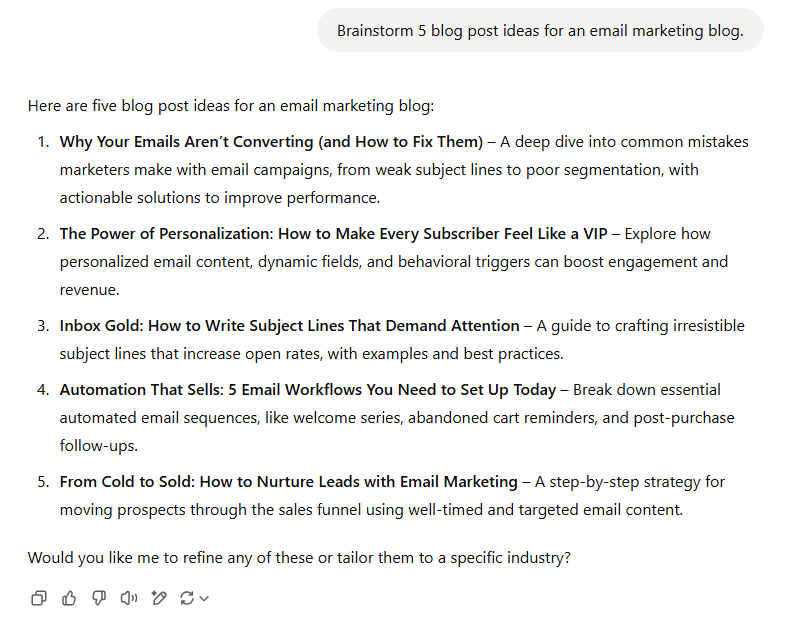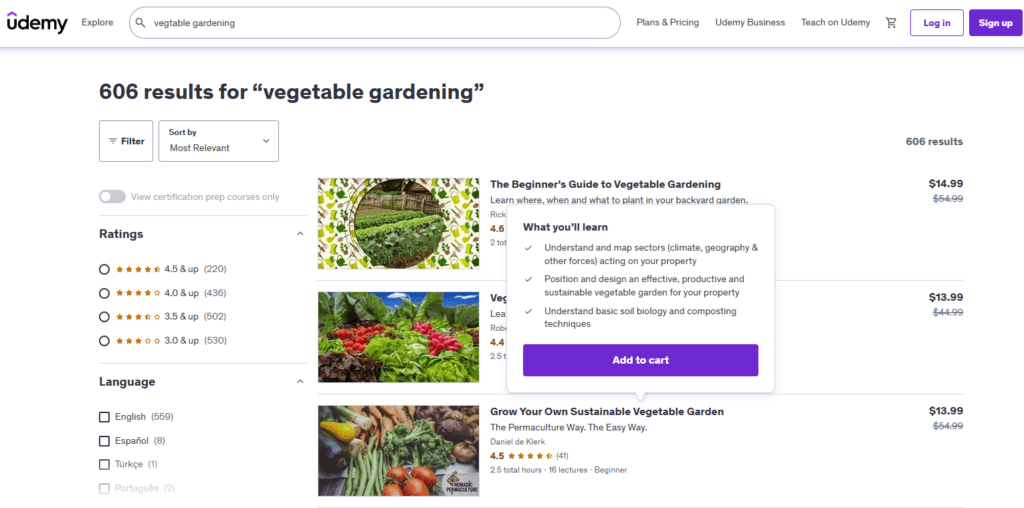Contents
Let’s be honest! Coming up with fresh blog topics can sometimes feel like staring at a blank page, hoping for inspiration to magically appear.
You’ve covered the basics, your go-to ideas are running dry, and now you’re stuck. Sound familiar?
The good news is great blog topics are everywhere. You just need the right tools and strategies to find them.
Writing content that attracts readers and ranks well on search engines isn’t about luck; it’s about knowing where to look and what people actually want to read.
In this post, we’ll explore 10 simple ways to find fresh blog topics that bring in traffic and keep your content engaging.
These tips will help you stay inspired, attract more readers, and grow your blog with ease. Let’s jump right in!
1. Use Google’s Auto-Suggest and ‘People Also Ask’ Features
One of the simplest ways to discover fresh blog ideas is to let Google guide your search.
Start by typing a keyword relevant to your niche directly into Google’s search bar. The auto-suggest feature will instantly display popular searches related to your keyword

These suggestions come straight from real user queries, making them a goldmine for content ideas.
Once you select a suggestion and see the search results, scroll down to the “People also ask” section for even more inspiration. This area reveals common questions your audience has about the topic, providing clear insight into what they’re curious about or struggling with:

For example, if we searched “parenting tips for toddler tantrums” on Google, you might see suggestions like:
- “What should a parent do during a toddler’s temper tantrum?”
- “How to parent a toddler with tantrums?”
Each of these questions can become its own engaging blog post that addresses specific reader needs. As a bonus, crafting content around these queries boosts your chances of ranking well in search results.
Try this strategy with various keywords in your niche, and you’ll consistently uncover new ideas your audience cares about.
2. Discover What’s Hot Right Now with Google Trends
If you want to write about topics people are actively searching for, Google Trends is your best friend.
This free tool shows real-time search trends, helping you spot rising topics before they become oversaturated.
You can use Google Trends to:
- Identify seasonal trends (e.g., “at-home workouts” surging every January when people set fitness goals).
- Find emerging topics in your niche that are gaining traction.
- Compare search interest over time to ensure a topic has lasting value.
For example, if you run a fitness blog, searching “home workouts” in Google Trends might reveal a spike in January, making it the perfect time to publish a post on “10 Best Home Workouts to Kickstart Your New Year.”

By keeping an eye on trending topics, you can create content that aligns with what your audience is searching for right now, helping you attract more traffic and stay ahead of the curve.
3. Analyze What’s Already Ranking on Google
One of the best ways to find high-traffic blog topics is to study what’s already performing well. If a topic is ranking high on Google, it means there’s demand, but that doesn’t mean there isn’t room for you to add a fresh angle or more value.
How to Do It:
- Google your target keyword and check out the top-ranking blog posts.
- Look for patterns – What subtopics do they cover? What’s missing?
- Find a unique angle – Can you make it more detailed, niche-specific, or updated?
Tools to Use:
- SurferSEO – Analyzes the top-ranking posts and suggests improvements for structure and depth.
- Ubersuggest – Shows the top-ranking blogs for any keyword, plus related topic ideas.
- SEMrush – Provides in-depth keyword research, competitor analysis, and content gap insights to help you find high-ranking blog topics with strong traffic potential.

Example:
If you search “best productivity tools”, most top-ranking posts might list general apps. But what if you notice that “Best Productivity Tools for Remote Workers” isn’t covered in detail?
That’s an opportunity to write a focused, niche-specific post that could rank higher for a targeted audience.
By analyzing what’s already ranking, you can reverse-engineer what works, add a fresh spin, and create content that stands out.
4. Check Ecommerce and Product Review Sites
Ecommerce and product review sites aren’t just for shopping, they’re a goldmine for blog topic inspiration.
By analyzing trending products and user reviews, you can uncover hot topics, common pain points, and questions that your audience is already asking.
Where to Look:
- Amazon Best Sellers – Browse trending products in your niche. The bestsellers and customer reviews can spark ideas for related blog posts.
- G2 & Capterra – Check software and tool reviews to see what users love and struggle with, then create content around those insights.
- Product Hunt – Discover the latest tech and software launches to stay ahead of industry trends.

Example:
Say standing desks are trending on Amazon’s Best Sellers list. Instead of writing a generic review, you could answer a specific question like:
- “Are Standing Desks Worth It? The Pros and Cons”
- “5 Best Standing Desks for Home Offices (Based on Reviews)”
By using real user insights and trending products, you can create timely, relevant content that people are already interested in.
5. Steal Ideas from Your Own Audience
Sometimes, the best blog topics are right in front of you. Your audience is already telling you what they want to read.
By paying attention to their questions, struggles, and conversations, you can create content that truly resonates and provides value.
Where to Find Blog Topic Ideas:
- Blog Comments & Social Media DMs – What are people asking you?
- Emails from Subscribers – Look for recurring questions or struggles.
- Facebook Groups, Reddit, & Quora – See what problems people are discussing in your niche.
Example:
If multiple readers ask, “How do I stop my dough from sticking to everything?” that’s a clear signal that a blog post on:
“How to Keep Bread Dough from Sticking to Your Hands, Counter, and Everything Else”, would be useful.
Your audience’s pain points = your next great blog topic. Keep a running list of these questions, and you’ll never run out of fresh content ideas.
6. Spy on Your Competitors’ Best Content
If your competitors are getting tons of traffic, it’s worth asking: What are they doing right?
Instead of guessing what works, you can analyze their top-performing blog posts to find content gaps, fresh angles, or better ways to present the information.
- Use tools like Ahrefs, SEMrush, or Ubersuggest to see which blog posts bring in the most traffic for your competitors.
- Look for content gaps – topics they only briefly mention but don’t fully cover.
- Take a different approach – can you make the content more actionable, more niche-specific, or more up-to-date?
Example:
If a competitor has a post titled “Best SEO Tools for 2025”, instead of copying the same idea, you could write:
- “Free SEO Tools vs. Paid SEO Tools: Which One is Worth It?”
- “The 7 Best SEO Tools for Beginners (and How to Use Them)”
By taking a new spin on a proven topic, you can attract readers searching for similar information, while standing out with a fresh perspective.
7. Use AI and Idea Generators
Stuck on what to write about? Let AI do the brainstorming for you. AI-powered tools and blog idea generators can provide instant inspiration based on your niche and keywords.
These tools help you uncover new angles, trending topics, and unique post ideas in seconds.
Best AI Tools for Blog Topic Ideas:
- ChatGPT – Ask it for blog ideas based on your niche.
- AnswerThePublic – Generates real user questions around a keyword.
- BuzzSumo – Finds high-performing content in your industry.
- HubSpot’s Blog Topic Generator – Creates blog post ideas from a few keywords.

Example:
If you run an email marketing blog, you could ask ChatGPT: “Give me 10 blog post ideas for an email marketing blog.”

From there, you can tweak and personalize the ideas to better fit your audience. AI can’t replace your creativity, but it can definitely kickstart the brainstorming process.
8. Look at Forums and Social Media Discussions
Some of the best blog topics come straight from real conversations. People are constantly asking questions and discussing trends on platforms like Reddit, Facebook groups, Twitter, and niche forums.
These discussions reveal what your audience actually cares about, making them perfect sources for blog ideas.
Where to Find Blog-Worthy Topics:
- Reddit (r/YourNiche) – Search for trending discussions and FAQs.
- Facebook Groups – See what questions get the most engagement.
- X Threads (Twitter) – Look at what industry experts are debating.
- Niche Forums & Discord Groups – Find pain points and hot topics.

Example:
If you come across a Reddit thread where someone is asking for healthy dog treat alternatives, you can turn it into a blog post like:
- “Healthy Dog Treat Alternatives: Vet-Approved Snacks Your Pup Will Love”
- “Ditch the Junk: The Best Natural Treats for Your Dog”
By turning real-world questions into blog content, you can create posts that instantly resonate with your audience.
9. Check Out Online Courses
Online learning platforms are packed with structured, high-demand content ideas. Courses on Udemy, Coursera, and LinkedIn Learning are created to meet real learning needs, which means their lesson titles often highlight popular topics that people are actively searching for.

How to Find Blog Topics from Courses:
- Browse courses in your niche – Look at the most popular and highest-rated ones.
- Check the course syllabus – The lesson titles often break down key topics people want to learn about.
- Identify gaps – Can you expand on a concept or approach it from a different angle?
Example:
If a vegetable gardening course has a lesson on “How to Map Your Garden for Optimal Growth Across Different Climates,” that’s a proven topic worth covering in a blog post like:
- “Garden Mapping 101: How to Plan for Your Climate and Maximize Growth”
- “Planting by Zone: How Climate Affects Your Vegetable Garden (and What to Grow)”
By using online course content as inspiration, you can create educational, in-demand content that helps gardeners understand climate variations and plan their plots effectively.
10. Use Keyword Research Tools to Find High-Traffic Topics
If you want to drive traffic, keyword research is essential. SEO tools like Ahrefs, SEMrush, Ubersuggest, and Google Keyword Planner help you discover high-traffic, low-competition keywords that make great blog topics.
How to Use Keyword Tools for Blog Ideas:
- Search for a broad topic – Start with a broad topic that relates to your industry, product, or audience’s interests.
- Look for related keywords – Find variations with high search volume and lower competition.
- Identify content gaps – Can you create a post that answers a specific need better than existing content?
Example:
If you search “best dog food” in Ahrefs, you might find a related keyword like “best grain-free dog food for small breeds.” That’s a specific, in-demand topic you can turn into a blog post like:
- “Grain-Free vs. Regular Dog Food: Which One is Right for Your Pup?”
- “The 10 Best Grain-Free Dog Foods for Small Breeds”
By leveraging keyword research tools, you ensure that your blog topics align with what people are actively searching for, increasing your chances of ranking higher and attracting more readers.
Conclusion
Coming up with fresh blog topics doesn’t have to be a struggle. With the right tools and strategies, you can consistently find new ideas that keep your content engaging, relevant, and traffic-friendly.
With these 10 easy ways to find fresh blog topics, you have a plethora of help on how to get started with new blog posts.
Now, it’s time to put these strategies into action. Pick one or two methods from this list and test them out, you’ll be surprised how quickly new ideas start flowing.
Got your own go-to strategy for finding blog topics?
Drop a comment below and share your favorite method! Let’s help each other keep the creativity going.








Leave a Reply